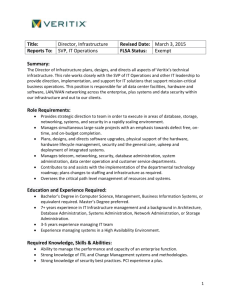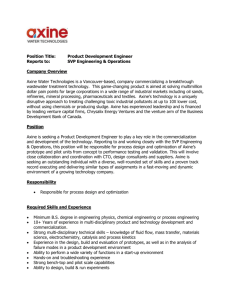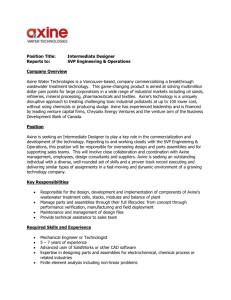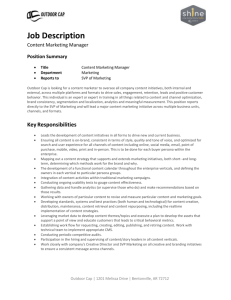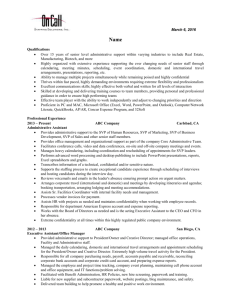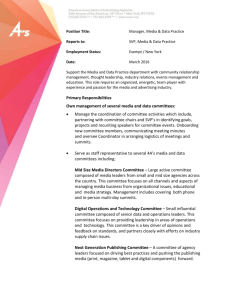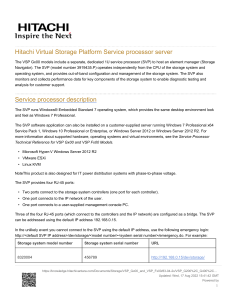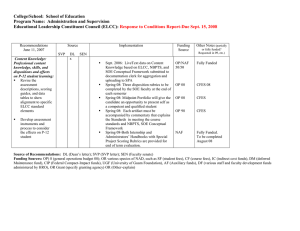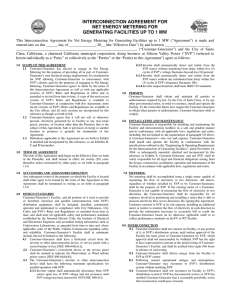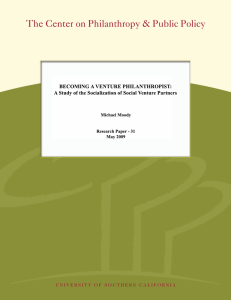Why involve stakeholders in technical analysis?
advertisement
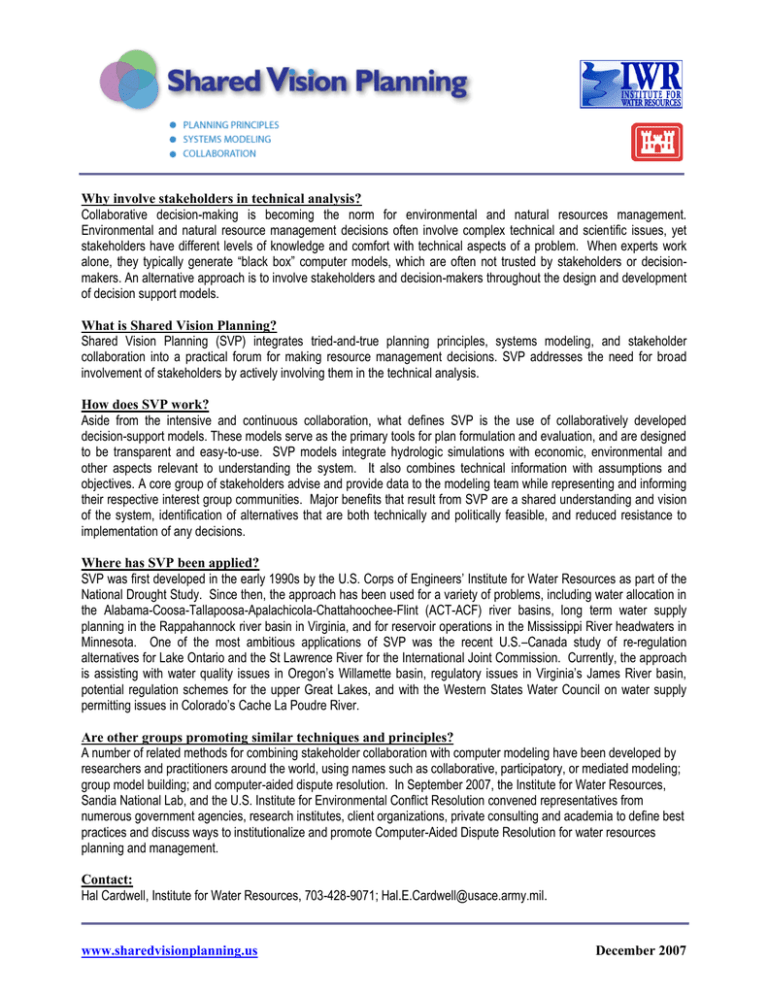
Why involve stakeholders in technical analysis? Collaborative decision-making is becoming the norm for environmental and natural resources management. Environmental and natural resource management decisions often involve complex technical and scientific issues, yet stakeholders have different levels of knowledge and comfort with technical aspects of a problem. When experts work alone, they typically generate “black box” computer models, which are often not trusted by stakeholders or decisionmakers. An alternative approach is to involve stakeholders and decision-makers throughout the design and development of decision support models. What is Shared Vision Planning? Shared Vision Planning (SVP) integrates tried-and-true planning principles, systems modeling, and stakeholder collaboration into a practical forum for making resource management decisions. SVP addresses the need for broad involvement of stakeholders by actively involving them in the technical analysis. How does SVP work? Aside from the intensive and continuous collaboration, what defines SVP is the use of collaboratively developed decision-support models. These models serve as the primary tools for plan formulation and evaluation, and are designed to be transparent and easy-to-use. SVP models integrate hydrologic simulations with economic, environmental and other aspects relevant to understanding the system. It also combines technical information with assumptions and objectives. A core group of stakeholders advise and provide data to the modeling team while representing and informing their respective interest group communities. Major benefits that result from SVP are a shared understanding and vision of the system, identification of alternatives that are both technically and politically feasible, and reduced resistance to implementation of any decisions. Where has SVP been applied? SVP was first developed in the early 1990s by the U.S. Corps of Engineers’ Institute for Water Resources as part of the National Drought Study. Since then, the approach has been used for a variety of problems, including water allocation in the Alabama-Coosa-Tallapoosa-Apalachicola-Chattahoochee-Flint (ACT-ACF) river basins, long term water supply planning in the Rappahannock river basin in Virginia, and for reservoir operations in the Mississippi River headwaters in Minnesota. One of the most ambitious applications of SVP was the recent U.S.–Canada study of re-regulation alternatives for Lake Ontario and the St Lawrence River for the International Joint Commission. Currently, the approach is assisting with water quality issues in Oregon’s Willamette basin, regulatory issues in Virginia’s James River basin, potential regulation schemes for the upper Great Lakes, and with the Western States Water Council on water supply permitting issues in Colorado’s Cache La Poudre River. Are other groups promoting similar techniques and principles? A number of related methods for combining stakeholder collaboration with computer modeling have been developed by researchers and practitioners around the world, using names such as collaborative, participatory, or mediated modeling; group model building; and computer-aided dispute resolution. In September 2007, the Institute for Water Resources, Sandia National Lab, and the U.S. Institute for Environmental Conflict Resolution convened representatives from numerous government agencies, research institutes, client organizations, private consulting and academia to define best practices and discuss ways to institutionalize and promote Computer-Aided Dispute Resolution for water resources planning and management. Contact: Hal Cardwell, Institute for Water Resources, 703-428-9071; Hal.E.Cardwell@usace.army.mil. www.sharedvisionplanning.us December 2007
